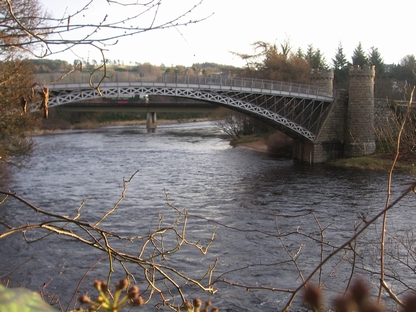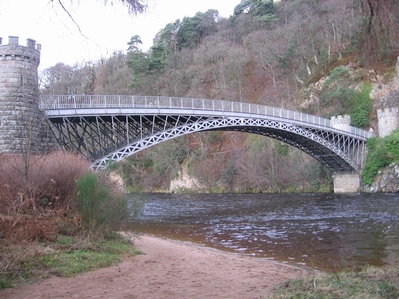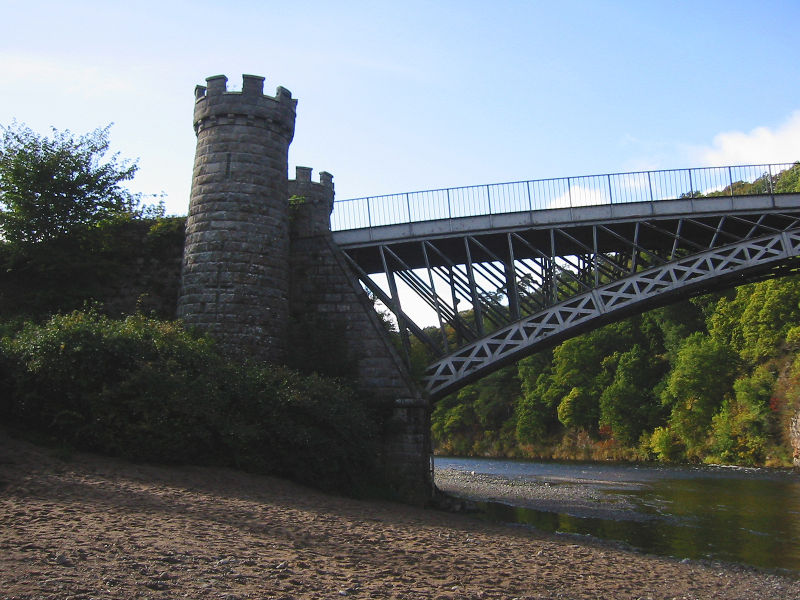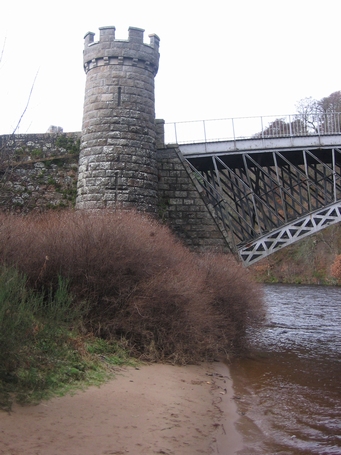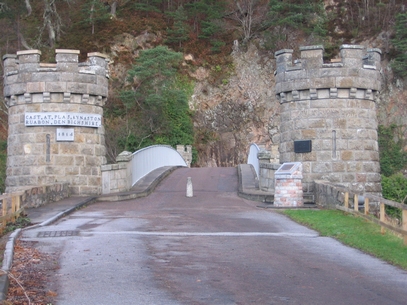| |||||||
Europe
North AmericaSouth AmericaAsiaAustralia and OceaniaAfrica |
Смотрите также: Craigellachie Bridge Craigellachie Bridge is a cast iron arch bridge located in Speyside, Moray, Scotland at Craigellachie which is near to the village of Aberlour.
It was designed by the renowned civil engineer Thomas Telford and built from 1812–1814. The bridge has a single span of approximately 46 metres (151 ft) and was revolutionary for its time, in that it used an extremely slender arch which was not possible using traditional masonry construction. The ironwork was cast at the Plas Kynaston iron foundry at Cefn Mawr, near Ruabon in Denbighshire by William Hazledine, who cast a number of Telford bridges. The ironwork was transported from the foundry through the Ellesmere Canal and Pontcysyllte Aqueduct then by sea to Speymouth, where it was loaded onto wagons and taken to the site. Testing in the 1960s revealed that the cast-iron had an unusually high tensile strength. This was likely specified by Telford because, unlike in traditional masonry arch bridges, some sections of the arch are not in compression under loading.
At each end of the structure there are two 15 metres (49 ft) high masonry mock-medieval towers, featuring arrow slits and miniature crenellated battlements. The bridge was in regular use until 1963, when it was closed for a major refurbishment. The side railings and spandrel members were replaced with new ironwork fabricated to match the originals. A 14 ton restriction was placed on the bridge at this point. This, along with the fact that the road to the north of the bridge takes a sharp right-angled turn to avoid a rock face, made it unsuitable for modern vehicles. Despite this it carried foot and vehicle traffic across the River Spey until 1972, when its function was replaced by a reinforced concrete bridge built by Sir William Arrol & Co. which opened in 1970 and carries the A941 road today. Telford's bridge remains in good condition, and is still open to pedestrians and cyclists. The bridge has been given Category A listed status by Historic Scotland and has been designated a civil engineering landmark by the Institution of Civil Engineers.
The bridge inspired a popular Strathspey, written by William Marshall in 1814. It was also the site of a parade upon the amalgamation of The Gordon Highlanders and The Queen's Own Highlanders (Seaforth and Camerons) to form The Highlanders (Seaforth, Gordons and Camerons) in 1994. A plaque has been fitted to the bridge parapet to commemorate this. Another plaque records the bridge's restoration in 1964. Comments: 0 |
|
|||||







































